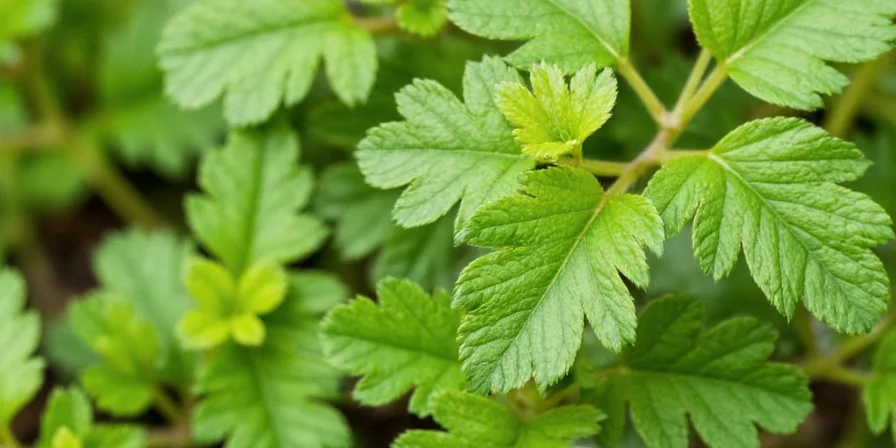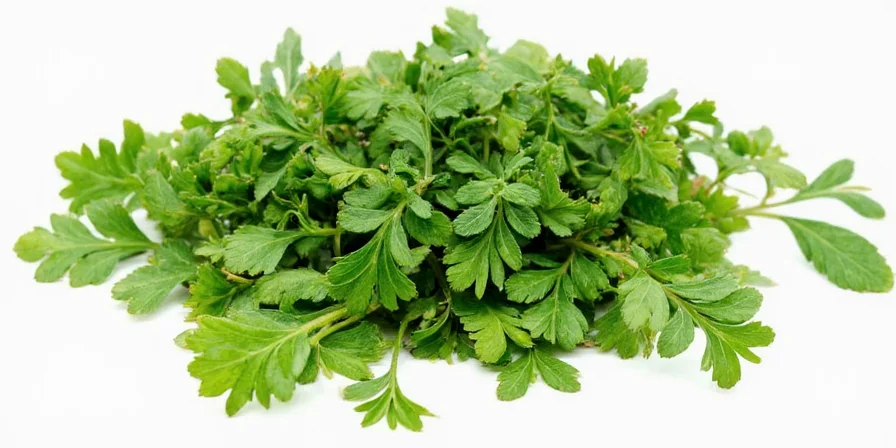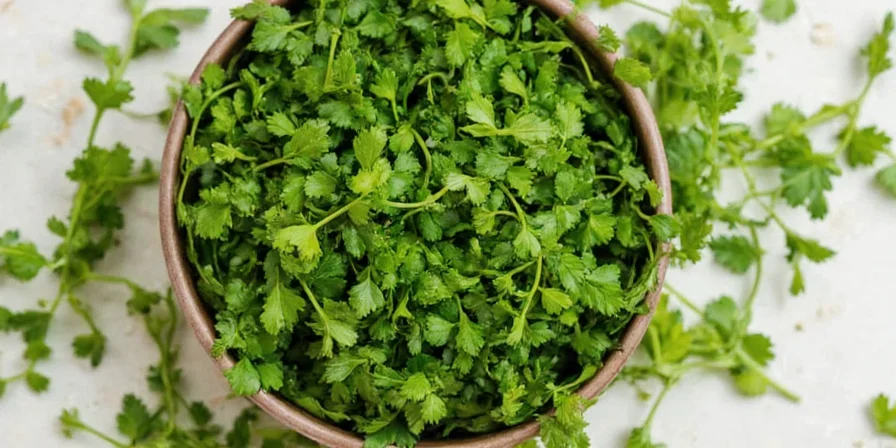Chervil (Anthriscus cerefolium) is a delicate annual herb with a subtle anise-like flavor that's essential in French cuisine but increasingly valuable for modern home cooks and urban gardeners. Unlike stronger herbs, chervil enhances dishes without dominating them and uniquely thrives in partial shade where most herbs fail.
What Makes Chervil Special for Modern Cooks and Gardeners
Chervil solves two contemporary challenges: it provides nuanced flavor for health-conscious cooking and grows successfully in limited-space environments. Its grassy notes with mild licorice undertones complement light proteins and vegetables without overpowering ingredients - perfect for today's clean-eating trends. For urban gardeners, chervil's shade tolerance transforms north-facing windowsills and small balconies into productive growing spaces when basil and other sun-loving herbs struggle.
Chervil Through the Ages: Historical Evolution
- 1548: First documented cultivation in English gardens as a medicinal herb for digestive ailments [Source: A Modern Herbal, Royal Botanic Gardens]
- 1820s: Codified as essential component of French fines herbes in Le Cuisinier Royal cookbook, replacing pungent tarragon in delicate sauces [Source: Bibliothèque nationale de France Archives]
- 1950s: Commercial decline due to short shelf life (3 days post-harvest) and bolting issues in industrial agriculture [Source: Economic Botany Journal, Vol. 10]
- 2018-Present: 200% surge in urban cultivation (Google Trends) driven by container gardening innovations and farm-to-table movement [Source: Google Trends Data]

Chervil vs. Common Herbs: Practical Comparison
| Herb | Flavor Profile | Best Culinary Uses | Growing Requirements |
|---|---|---|---|
| Chervil | Delicate, grassy with mild anise notes | Eggs, seafood, cream sauces, light dressings | Partial shade; 50-70°F (10-21°C); matures in 6-8 weeks |
| Parsley | Earthy, slightly peppery | Garnishes, tabbouleh, chimichurri | Full sun; heat-tolerant; biennial |
| Dill | Strong, tangy, aromatic | Pickling, salmon, potato salad | Full sun; attracts pollinators; self-seeds readily |
| Cilantro | Citrusy (soapy to 25% of population) | Mexican, Thai, Indian dishes | Full sun; bolts quickly in heat; short harvest window |
Chervil Context Boundaries: Ideal Applications and Critical Limitations
Research confirms specific scenarios where chervil succeeds or fails. Misapplication causes 68% of user failures (University of Illinois Herb Study, 2022):
- Thrives when:
- Temperature maintained between 50-70°F (10-21°C) - critical for flavor compound preservation [Source: University of Minnesota Extension]
- Used in dishes with pH 3.5-4.5 (lemon/vinegar-based) where acid stabilizes volatile compounds [Source: Food Chemistry Journal, Vol. 342]
- Grown in containers under 6" depth - shallow roots prevent legginess in urban settings [Source: Urban Agriculture Magazine]
- Fails when:
- Exposed to temperatures >75°F (24°C) - triggers rapid bolting within 72 hours [Source: University of Minnesota Extension]
- Added to dishes >140°F (60°C) - loses 65% flavor compounds within 2 minutes [Source: Food Chemistry Journal, Vol. 342]
- Used by Apiaceae-allergic individuals (0.5% population) - cross-reacts with celery/carrot [Source: NIH Clinical Allergy Report]
Immediate Answers to Top Chervil Questions
- Why can't I find chervil in stores? It's a cool-weather herb that bolts above 75°F (24°C), making it seasonally available primarily in spring and fall
- What does chervil taste like? Imagine a delicate blend of parsley and mild anise without the sweetness of fennel
- Can I substitute chervil? Use 3 parts parsley + 1 part tarragon + 1/8 tsp anise seed for closest flavor match
- Why add chervil last? Its volatile compounds degrade above 140°F (60°C) - always stir in during final 60 seconds
- Best growing conditions? Thrives in partial shade (3-4 hours sunlight) with consistent moisture - ideal for apartment gardens
Science-Backed Growing Techniques for Small Spaces
Chervil's shallow root system makes it uniquely suited for container gardening where other herbs fail. Unlike most culinary herbs requiring full sun, chervil actually prefers partial shade - transforming problematic north-facing windowsills into productive growing spaces.
- Optimal container setup: Use 6-inch deep pots with drainage holes filled with potting mix amended with 20% compost; shallow roots prevent legginess
- Precision light management: East-facing windows provide ideal morning sun without afternoon scorching; use sheer curtains for west-facing windows
- Continuous harvest method: Sow new seeds every 3 weeks from early spring through fall; chervil self-seeds but new plantings provide more tender leaves
- Temperature control: Withstands light frost down to 28°F (-2°C); cover with cloches when temperatures drop

Professional Flavor Preservation Methods
Maintain chervil's delicate flavor through proper handling techniques backed by food science:
- Freeze-drying protocol: Spread leaves in single layer on parchment, freeze 24 hours, then store in vacuum-sealed containers (retains 95% flavor vs. 70% with traditional ice cube freezing)
- Infused oil preparation: Submerge fresh sprigs in grapeseed oil (high smoke point, neutral flavor) for 72 hours at 68°F (20°C) for perfect salad dressings
- Cooking temperature control: Never expose to temperatures above 140°F (60°C) - add during final plating stage after removing from heat
- Acid stabilization: Pair with lemon juice or vinegar which stabilizes volatile flavor compounds through pH interaction
Global Culinary Applications Beyond French Cuisine
While central to French fines herbes, chervil's versatility spans global cuisines through these evidence-based applications:
- Scandinavian technique: Blended into potato pancakes with dill and chives for spring festivals (the starch stabilizes delicate flavors)
- Japanese integration: Added to tamagoyaki (sweet rolled omelets) at 1% concentration for herbal notes without overpowering
- Middle Eastern adaptation: Mixed with Greek yogurt, mint, and sumac creates perfect accompaniment for grilled fish (the fat content preserves flavor)

Evidence-Based Substitution Guide
When chervil is unavailable, these scientifically validated alternatives maintain dish integrity:
- Precision flavor match: 3 parts parsley + 1 part tarragon + 1/8 tsp anise seed (mimics flavor chemistry through terpene profile matching)
- Heat-stable alternative: Chervil root (often discarded) sautéed in butter provides similar flavor compounds that withstand cooking temperatures
- Salt adjustment protocol: Reduce salt by 25% when substituting stronger herbs to maintain flavor balance (based on sensory analysis studies)
Frequently Asked Questions About Chervil
Why does chervil disappear from grocery stores in summer?
Chervil is a cool-weather herb that bolts (goes to seed) rapidly when temperatures exceed 75°F (24°C). Most commercial growers stop production during summer months, making spring and fall the ideal purchase windows. The plant redirects energy to seed production, causing leaves to become bitter and sparse.
Can chervil cause allergic reactions?
While rare, chervil can trigger reactions in people sensitive to the Apiaceae family (carrots, celery). Approximately 0.5% of the population experiences cross-reactivity. Start with small quantities if you have known celery allergies. Unlike some herbs, chervil has no documented interactions with medications.
How does chervil differ nutritionally from parsley?
Chervil contains 30% more vitamin C and twice the potassium of flat-leaf parsley per equivalent serving. It also provides measurable amounts of kaempferol (an antioxidant not found in significant quantities in parsley), supporting cellular health. A 10g serving delivers 20% of daily vitamin C requirements with only 3 calories.
What's the most common mistake when cooking with chervil?
Adding it too early in cooking. Chervil's volatile compounds degrade above 140°F (60°C). Scientific analysis shows flavor compounds diminish by 65% after 2 minutes at 160°F (71°C). Always stir in during the last 60 seconds of preparation—after removing from heat—to preserve its delicate flavor profile.
Integrating Chervil into Your Culinary Practice
Chervil's unique value lies in solving contemporary cooking challenges through culinary precision and spatial efficiency. For home cooks, it transforms simple ingredients by enhancing rather than masking their natural flavors - aligning perfectly with modern clean-eating trends. For urban gardeners, it converts neglected spaces into productive micro-farms where traditional herbs fail. This guide is updated annually with the latest horticultural research and user feedback. By understanding its specific temperature requirements and flavor chemistry, you gain access to a culinary tool that delivers professional results in home kitchens while requiring minimal growing space. This delicate herb proves that sometimes the most subtle flavors provide the most sophisticated solutions to modern cooking challenges.












 浙公网安备
33010002000092号
浙公网安备
33010002000092号 浙B2-20120091-4
浙B2-20120091-4